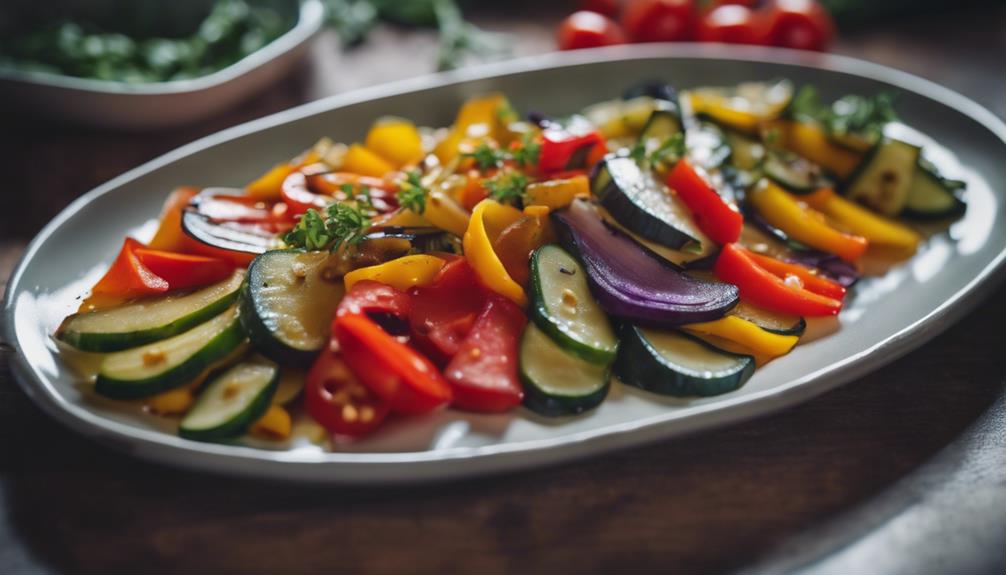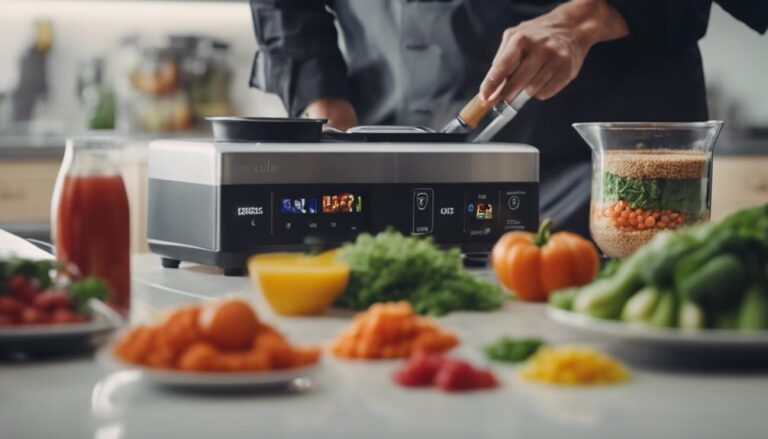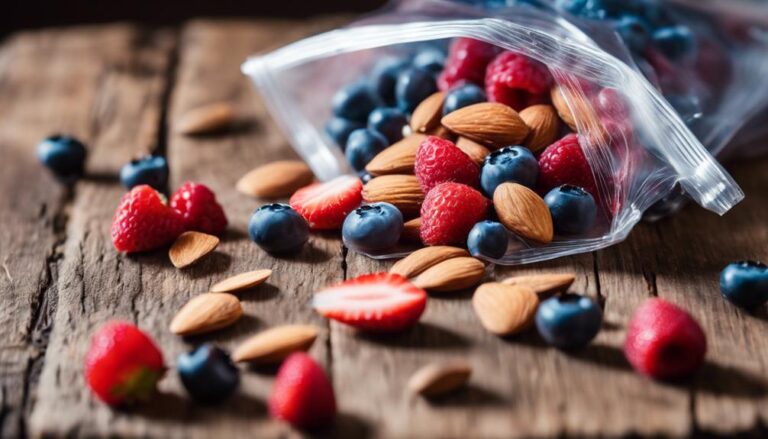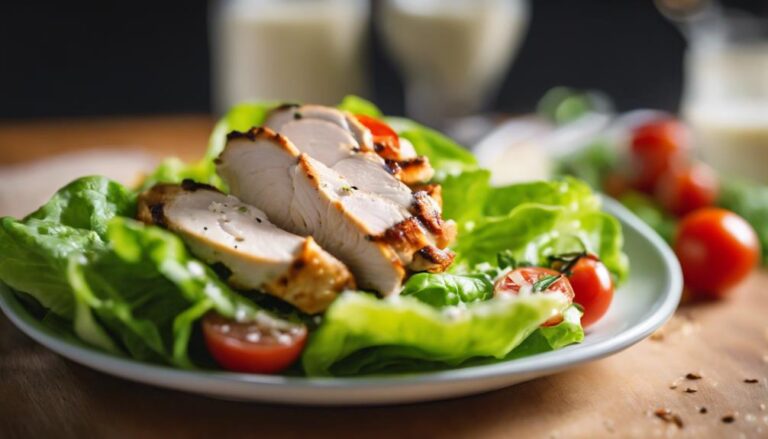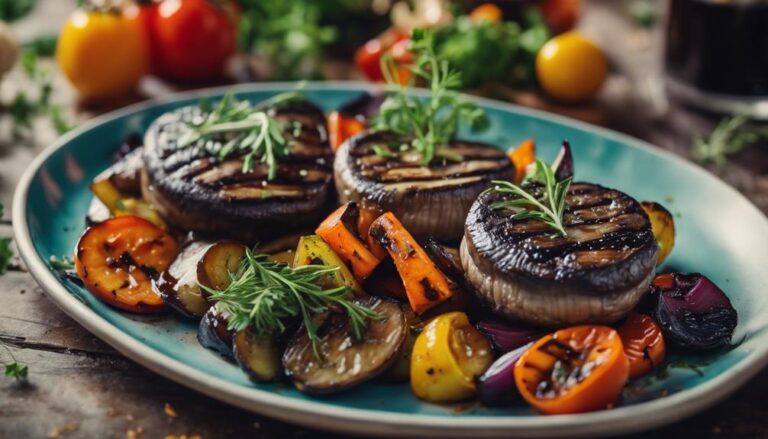Sous Vide Ratatouille: A Vegetarian 5 Factor Diet Dinner
Immerse yourself in the world of healthy vegetarian dining with Sous Vide Ratatouille—a perfect match for the 5 Factor Diet. This exquisite French-Mediterranean dish showcases seasonal vegetables like tomatoes, zucchini, eggplant, and bell peppers, cooked to precision using sous vide techniques. Not only does this colorful dish appeal to vegetarians, but it also retains nutrients and flavors exceptionally well. With its blend of flavors and textures, Sous Vide Ratatouille exemplifies both health-conscious choices and gourmet satisfaction. Master the art of creating this culinary masterpiece with ease and style.
What You Will Learn Here
- Sous vide ratatouille is a nutritious, vegetarian dish rich in vitamins and minerals.
- It aligns with the 5 Factor Diet, emphasizing quality ingredients and precise cooking techniques.
- Seasonal vegetables and herbs enhance flavor and offer a visually appealing dish.
- Sous vide cooking ensures even cooking, texture retention, and vibrant flavors.
- Ratatouille showcases Mediterranean flavors, perfect for a vegetarian diet and weight management.
Origins of Ratatouille
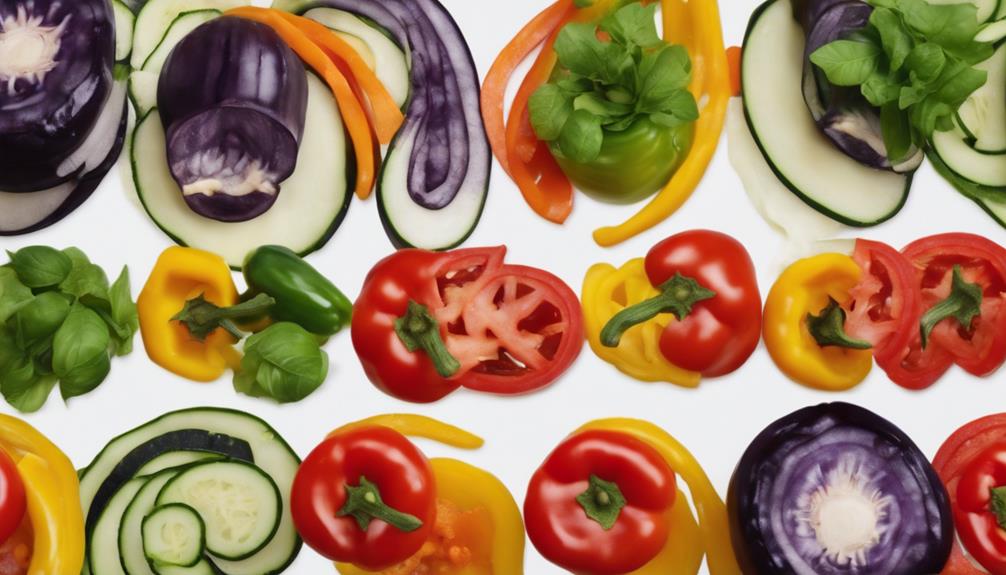
Ratatouille, a classic French dish, has deep roots in Mediterranean cuisine.
The dish typically consists of a variety of vegetables like tomatoes, zucchini, eggplant, and bell peppers.
Different cooking techniques can be used to prepare Ratatouille, such as sautéing, baking, or stewing the vegetables to create a flavorful and colorful dish.
Ratatouille's French Roots
With its origins deeply rooted in French culinary history, the dish known as ratatouille is a classic example of traditional Provençal cuisine. This flavorful vegetable stew showcases the essence of French cuisine, blending Mediterranean influences to create a dish that holds significant cultural importance.
Ratatouille has long been celebrated not only for its delicious taste but also for its ability to capture the essence of the French countryside. In France, where food is an integral part of the culture, ratatouille has become a symbol of simplicity and elegance in cooking.
The dish's use of fresh seasonal vegetables highlights the French culinary tradition of prioritizing quality ingredients. Ratatouille's French roots are a demonstration of the country's rich gastronomic history, showcasing a blend of flavors and techniques that have been passed down through generations.
Whether enjoyed as a side dish or a main course, ratatouille's French heritage shines through in every bite, offering a taste of the vibrant and diverse world of French cuisine.
Ingredients in Ratatouille
The origins of ratatouille can be traced back to the diverse array of fresh vegetables commonly found in the Mediterranean region. Traditional ratatouille ingredients include tomatoes, zucchini, eggplant, bell peppers, onions, garlic, and herbs like thyme and basil. This flavorful vegetable stew is known for its rich taste and versatility in culinary uses.
Ratatouille's ingredients can be substituted based on personal preferences or availability. For example, you can swap out zucchini for yellow squash, or use different colored bell peppers for a varied visual appeal. These substitutions can alter the flavor profiles slightly, adding a unique twist to the classic dish while maintaining its essence.
The combination of these fresh ingredients creates a dish that isn't only delicious but also nutritious and visually appealing. Ratatouille can be served as a side dish, over pasta, or even as a main course with crusty bread. Its vibrant colors and robust flavors make it a popular choice for vegetarians and vegans, offering a satisfying and wholesome meal option.
Ratatouille Cooking Techniques
To master the origins of ratatouille's cooking techniques, explore the traditional methods of preparing this iconic dish using fresh Mediterranean vegetables.
When considering ratatouille, sous vide techniques offer precise temperature control, ensuring each vegetable retains its unique texture and flavor profiles.
The sous vide method involves vacuum-sealing ingredients in a bag and cooking them in a water bath at a constant low temperature for an extended period.
This gentle cooking process allows the vegetables to slowly release their juices, resulting in a rich and flavorful ratatouille.
Key Ratatouille Ingredients
What're the essential ingredients for a flavorful ratatouille dish? When preparing a delicious ratatouille, incorporating the right ingredients is key to achieving a harmonious blend of flavors.
Here are some key ingredients you'll need:
- Seasonal Vegetables: Ratatouille is traditionally made with a variety of seasonal vegetables such as eggplant, zucchini, bell peppers, and tomatoes. Using fresh, in-season produce will enhance the taste and texture of your dish.
- Cooking Methods: Ratatouille can be prepared using different cooking methods, but the most common ones include sautéing or roasting the vegetables. Each method brings out unique flavors and textures in the dish.
- Flavor Combinations: To elevate the taste of your ratatouille, consider adding herbs like thyme, basil, or oregano for a fragrant aroma. Additionally, garlic, onions, and a good quality olive oil are essential for creating a rich and savory base.
Top-Rated Ratatouille Variations
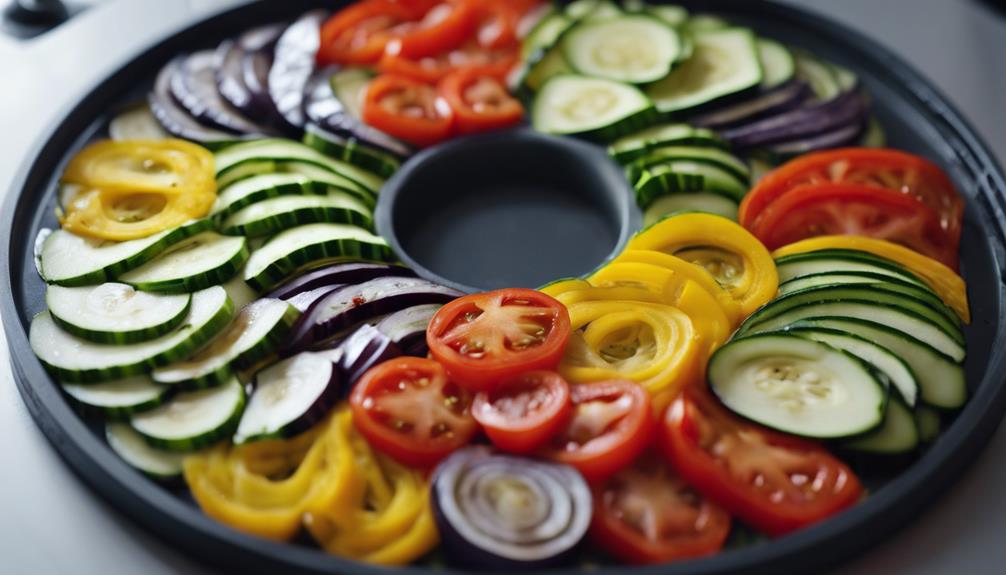
Let's explore some top-rated ratatouille variations that can elevate your culinary experience.
From the classic ratatouille recipe to unique twists and special spins, there are endless ways to experiment with this traditional French dish.
Whether you prefer sticking to the roots or adding a touch of creativity, these variations offer a spectrum of flavors to suit every palate.
Classic Ratatouille Recipe
You can explore various top-rated variations of the classic ratatouille recipe to elevate your culinary experience. Ratatouille, a traditional French dish, has a rich history dating back to the 18th century. This vegetable stew combines flavors of Provence, showcasing the beauty of simple ingredients like tomatoes, zucchini, eggplant, and bell peppers.
- Ratatouille Nicoise: This version includes a mixture of vegetables cooked in olive oil with fragrant herbs like thyme and basil, giving it a distinct Mediterranean flavor.
- Ratatouille Confit Byaldi: Inspired by the famous dish from the movie 'Ratatouille,' this presentation involves layering thinly sliced vegetables in an elegant spiral pattern for a visually stunning effect.
- Ratatouille Provençale: A classic rendition that captures the essence of Provence, this recipe often includes ripe tomatoes, garlic, and a bouquet garni for a robust and aromatic taste.
For those seeking vegetarian options, ratatouille is a fantastic choice, providing a hearty and nutritious meal that celebrates the bounty of fresh produce.
Unique Ratatouille Twist
Discover a modern take on the traditional ratatouille dish with these top-rated variations that offer unique twists to elevate your culinary experience.
If you're looking to impress your guests or simply enhance your weeknight dinner, consider these innovative ideas:
- Sous Vide Twist: Incorporate a sous vide twist to your ratatouille preparation. By cooking the vegetables sealed in a bag at a precise temperature, you guarantee they retain their nutrients and flavors, resulting in a melt-in-your-mouth texture that will delight your taste buds.
- Creative Presentation: Opt for a creative presentation of your ratatouille by arranging the colorful vegetables in a visually appealing pattern. Whether you stack them neatly in a tower or spiral them on the plate, a unique presentation can make your dish even more inviting.
- Vegetarian Option: Embrace the vegetarian option as a healthy alternative to traditional ratatouille. Packed with nutrient-rich vegetables and flavorful herbs, this version isn't only delicious but also a nutritious choice for a well-rounded meal.
Special Ratatouille Spin
For a unique twist on the classic ratatouille dish, consider exploring top-rated variations that bring a special spin to this traditional favorite. When looking to elevate your ratatouille experience, there are several avenues to uncover:
- Flavor Experimentations:
Dive into the world of herbs and spices to create a flavor profile that's uniquely yours. Experiment with different combinations such as adding a touch of smoked paprika or a hint of truffle oil for a luxurious twist.
- Sous Vide Techniques:
Explore the sous vide method to cook your ratatouille ingredients to perfection. This cooking technique guarantees that each vegetable retains its distinct texture and flavor, resulting in a mouthwatering dish that's sure to impress.
- Ingredient Substitutions:
Get creative with ingredient swaps to cater to dietary preferences or simply to try something new. Consider using zucchini noodles instead of traditional slices or incorporating sweet potatoes for a flavorful twist.
These suggestions won't only add excitement to your ratatouille but also showcase your culinary prowess. Experiment, innovate, and enjoy the journey of creating a truly special ratatouille dish.
Ratatouille Cooking Techniques
When preparing ratatouille, consider the benefits of using the sous vide cooking technique for best flavor infusion.
Selecting the freshest and most vibrant vegetables is essential to achieving a delicious end result.
Enhance the overall taste of your ratatouille by incorporating flavorful herbs and seasonings during the cooking process.
Sous Vide Benefits
Enhance your ratatouille cooking techniques by leveraging the precision and flavor-ensuring benefits of sous vide cooking. Sous vide benefits include time-saving and exceptional flavor retention.
By sealing your ingredients in airtight bags and cooking them in a water bath at precise temperatures, you guarantee that every vegetable in your ratatouille retains its nutrients and flavors without the risk of overcooking.
With sous vide, you can set the exact temperature needed for each vegetable, allowing them to cook evenly and thoroughly without constant monitoring. This method not only saves you time but also assures a consistent result every time you prepare ratatouille for your guests or family.
The gentle cooking process of sous vide helps vegetables maintain their natural textures and vibrant colors, resulting in a visually appealing and delicious dish.
Vegetable Selection Tips
Choose top-notch, fresh vegetables to guarantee the finest flavors and textures for your ratatouille when employing sous vide cooking techniques. Opt for seasonal produce to enhance the natural taste and ensure peak freshness.
When selecting vegetables for your ratatouille, consider vegetable pairing to create a harmonious blend of flavors. For example, pairing zucchini with eggplant can provide a delightful contrast in texture variations. Experiment with different flavor combinations by mixing sweet bell peppers with tangy tomatoes to create a well-balanced dish.
To achieve a successful ratatouille, aim for a mix of vegetables that offer a variety of textures. For instance, combining soft tomatoes with firmer vegetables like bell peppers can create a pleasing contrast in each bite. Remember that the sous vide method allows the vegetables to retain their individual textures while melding together flavors harmoniously.
Flavor Enhancements
To elevate the flavors of your sous vide ratatouille, consider incorporating various cooking techniques that enhance the overall taste profile. Experiment with flavor pairings such as adding fresh basil for a fragrant herbal note or a sprinkle of tangy balsamic vinegar to balance the sweetness of the vegetables.
Seasoning techniques like layering salt and pepper throughout the cooking process can help build depth in every bite.
Additionally, try roasting some of the vegetables before sous vide cooking to develop a rich caramelized flavor that will infuse the entire dish. A touch of smoked paprika can add a subtle smokiness that elevates the overall taste experience.
Don't underestimate the power of garlic and onions sautéed to golden perfection; they can bring a savory umami undertone to your ratatouille.
Final Thoughts
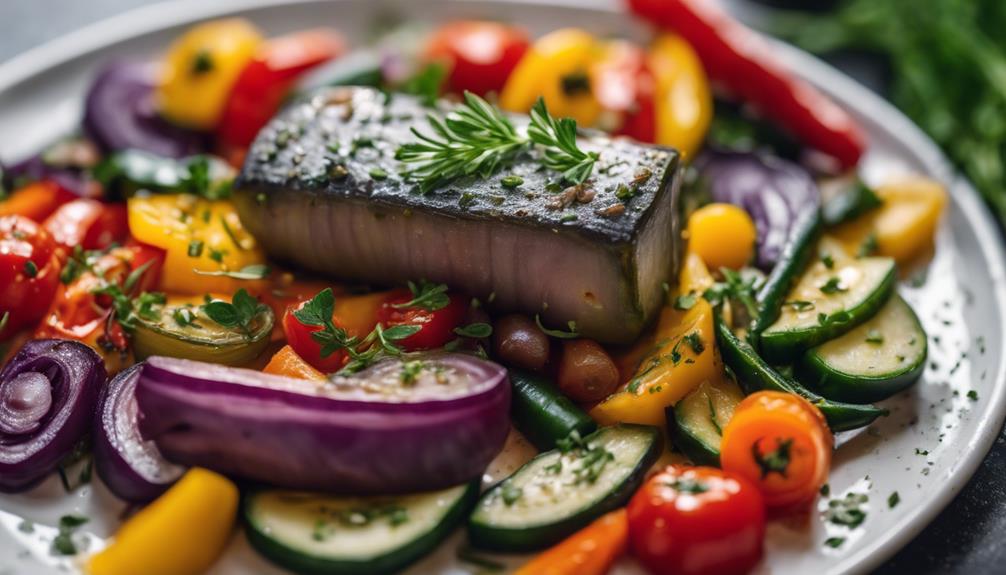
Consider reflecting on your culinary journey with this delectable sous vide ratatouille, appreciating the flavors and textures you have expertly crafted. The sous vide benefits have allowed the vegetables to retain their natural essence, resulting in a dish bursting with vibrant flavor profiles. The slow cooking method guarantees that each ingredient contributes to the overall taste, creating a harmonious blend of savory goodness.
In terms of nutritional value, this ratatouille is a powerhouse of vitamins and minerals, making it a wholesome addition to your 5 Factor Diet meal prep strategies. By incorporating a variety of colorful vegetables, you not only elevate the visual appeal but also enhance the dish's health benefits.
As you savor each bite of this vegetarian delight, take a moment to appreciate the simplicity and elegance of sous vide cooking. The convenience, consistency, and exceptional taste of this ratatouille make it a perfect choice for those seeking a nutritious and satisfying meal. Enjoy your culinary creation and share the joy of good food with others.
Frequently Asked Questions
Can I Use Frozen Vegetables for Sous Vide Ratatouille?
Yes, you can use frozen vegetables for sous vide cooking, but fresh may provide a more vibrant taste. Both fresh and frozen options work well, ensuring a delicious ratatouille. Experiment with different techniques to find your preferred flavor.
How Can I Add Protein to This Vegetarian Dish?
To add protein to your vegetarian dish, consider incorporating protein sources like tofu, tempeh, or seitan. These meat alternatives can be sous vide along with your ratatouille to infuse flavors and create a well-rounded meal.
Is It Necessary to Peel the Vegetables Before Cooking?
To retain vegetable nutrients, consider not peeling. However, if you prefer a softer texture or want to reduce bitter flavors, peeling may be necessary. Experiment with both options to find what suits your taste best.
Can I Make Sous Vide Ratatouille Ahead of Time?
You can definitely meal prep sous vide ratatouille ahead of time for efficient time management. Experiment with recipe variations and sous vide techniques to enhance flavors. It's a great way to serve a delicious meal effortlessly.
What Are Some Creative Ways to Serve Ratatouille?
When thinking about Ratatouille presentation, consider colorful layers in a clear glass jar. Experiment with flavor combinations like adding tangy goat cheese or a sprinkle of fresh herbs for a delightful twist.
Conclusion
To sum up, sous vide ratatouille is a delectable and nourishing vegetarian choice for a 5 factor diet dinner. With its roots in French cuisine and a range of essential components, this meal presents limitless opportunities for personalization.
By experimenting with various culinary methods and adaptations, you can craft a ratatouille that aligns with your flavor preferences and nutritional requirements. Give this tasty dish a try for a wholesome and gratifying meal that's certain to delight your taste buds.
